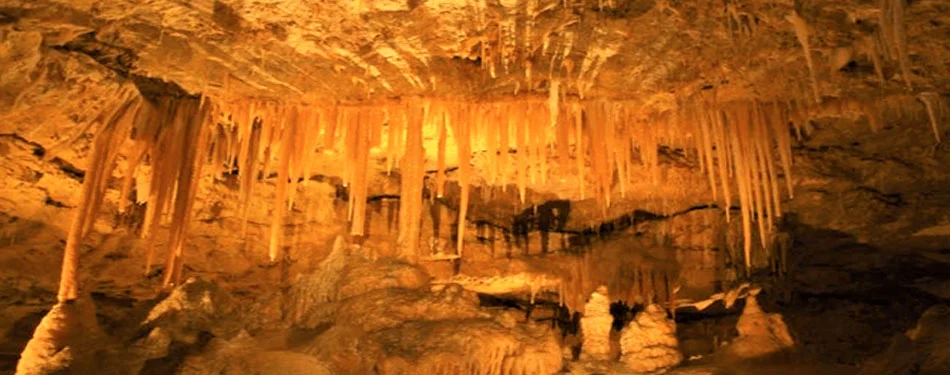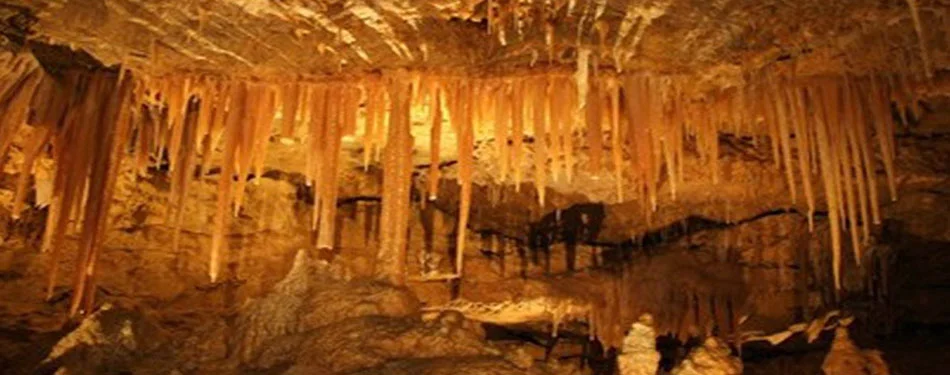Exploring Caves and Limestone Formations in the Andaman Islands

The Andaman Islands, a stunning archipelago in the Bay of Bengal, are not only known for
their pristine beaches and rich marine life but also for their spectacular caves and
limestone formations. These geological wonders offer a unique glimpse into the earth's
natural history and provide thrilling adventures for visitors. Among these are the
limestone caves in Diglipur, hidden caves on Neil Island, Alfred Caves near Diglipur,
and the caving adventures in Baratang Island. This guide takes you through some of the
most intriguing caves and limestone formations in the Andaman Islands, ensuring you know
what to expect and how to make the most of your visit.
Limestone Caves in Diglipur Andaman
Diglipur, located in the northern part of the Andaman Islands, is home to some of the
most spectacular limestone caves. The limestone caves in Diglipur Andaman are a
testament to the island's geological diversity. These caves are accessible via a short
trek through the dense forest, adding an element of adventure to the experience. Inside,
the caves reveal stunning stalactites and stalagmites, formed over millions of years.
The formations are both eerie and beautiful, creating a mystical ambiance that leaves
visitors in awe.
Hidden Caves on Neil Island Andaman

Neil Island, also known as Shaheed Dweep, is a serene island located
southeast of the
Andaman capital, Port Blair. While Neil Island is famous for its pristine beaches and
coral reefs, it also hides some fascinating caves. The hidden caves on Neil Island
Andaman are lesser-known but offer a unique exploration experience. These caves, carved
out by natural forces, are scattered around the island and require a bit of local
knowledge or a guide to find. Exploring these hidden caves is like stepping into a
different world, where the silence and darkness envelop you, making the adventure all
the more thrilling.
Alfred Caves Near Diglipur

Not far from Diglipur, the Alfred Caves offer another exciting caving opportunity. The
Alfred Caves near Diglipur is a series of interconnected limestone caves that stretch
deep into the earth. These caves are named after the Alfred family, who were early
settlers in the area. The caves are known for their intricate formations and narrow
passages, making them a favorite among adventure enthusiasts. Exploring the Alfred Caves
requires a guide, as the maze-like structure can be disorienting. However, the effort is
well worth it, as the caves offer a glimpse into the island's geological past.
Caving Adventures in Baratang Island Andaman

Baratang Island, located between the Middle and South Andaman Islands, is famous for its
diverse ecosystems, including mangroves, mud volcanoes, and, of course, limestone caves.
The caving adventures in Baratang Island Andaman are a major attraction for tourists.
The journey to the caves involves a scenic boat ride through dense mangrove forests,
followed by a trek to the entrance of the caves. The Baratang limestone caves are filled
with stunning formations that resemble natural sculptures, showcasing the artistry of
nature.
What sets the caving adventures in Baratang Island Andaman apart is the overall
experience. The boat ride through the mangroves is an adventure in itself, where one can
spot various bird species and even crocodiles basking in the sun. The trek to the caves
offer a chance to experience the island's lush greenery up close. Once inside the caves,
the cool, damp air and the surreal formations transport visitors to another world. The
highlight of the Baratang caves is the sheer variety of formations, from delicate
curtains of limestone to massive columns that seem to defy gravity.
Check out more blogs
The Importance of Responsible Caving
While exploring the caves and limestone formations in the Andaman Islands, it is
important to practice responsible caving. These natural wonders are fragile
ecosystems that can be easily damaged by human activity. Here are a few tips for
responsible caving:
1. Follow Local Guidelines: Always adhere to the guidelines provided by
local authorities or guides. They know the best practices to ensure both your safety and
the preservation of the caves.
2. Do Not Touch Formations: The oils from human skin can damage the
delicate formations inside the caves. It is essential to admire these wonders from a
distance without touching them.
3. Leave No Trace: Carry out all your waste and leave the caves as you
found them. Avoid leaving behind any litter or markings.
4. Stay on Marked Paths: Many caves have marked paths to minimize impact
on
the environment. Stick to these paths to avoid disturbing the natural habitat.
Tips for Exploring Caves in the Andaman Islands
1. Wear Comfortable Clothing: Always wear comfortable and breathable
clothing as the humidity inside the caves can be high.
2. Good Footwear: Ensure you have sturdy footwear as the grounds inside
the
caves can be slippery and uneven.
3. Carry Water and Snacks: There are no facilities inside the caves, so
it’s a good idea to carry water and some snacks.
4. Respect Nature: These caves are natural wonders that have formed over
millions of years. Avoid touching or breaking the stalactites and stalagmites.
5. Hire a Local Guide: Many caves are not well-marked, and local guides
can
provide invaluable information not only about the route but also about the flora and
fauna of the area.
6. Check Weather Conditions: Caves can be affected by weather
conditions,
especially during the monsoon season. Make travel plans based on the weather forecast
after checking it.
The Rich History and Cultural Significance: Indigenous Connection
The caves and limestone formations in the Andaman Islands are not only natural wonders
but also hold cultural and historical significance. The indigenous tribes of the Andaman
Islands have lived in harmony with these caves for centuries. For them, the caves are
more than just geological formations; they are part of their heritage and traditions.
The Great Andamanese, Onges, and other indigenous tribes have used the caves for shelter,
rituals, and as sources of freshwater. Their knowledge of the caves has been passed down
through generations, and they have a deep respect for these natural formations. Visitors
are encouraged to learn about the cultural significance of the caves and respect the
traditions of the indigenous people.
Conclusion
The caves and limestone formations in the Andaman Islands offer a unique blend of
adventure, beauty, and science. From the popular limestone caves in Diglipur to the
secluded Alfred Caves and the exciting caving experiences on Baratang Island, these
natural wonders provide unforgettable experiences for all kinds of travelers. Whether
you are an adventure enthusiast, a nature lover, or simply someone looking to explore
unusual places, the caves of the Andaman Islands promise a captivating adventure.



